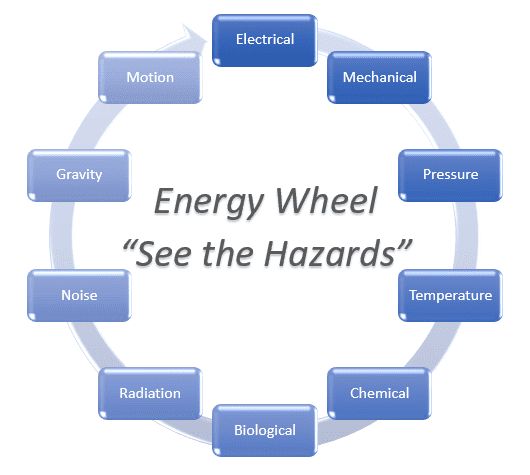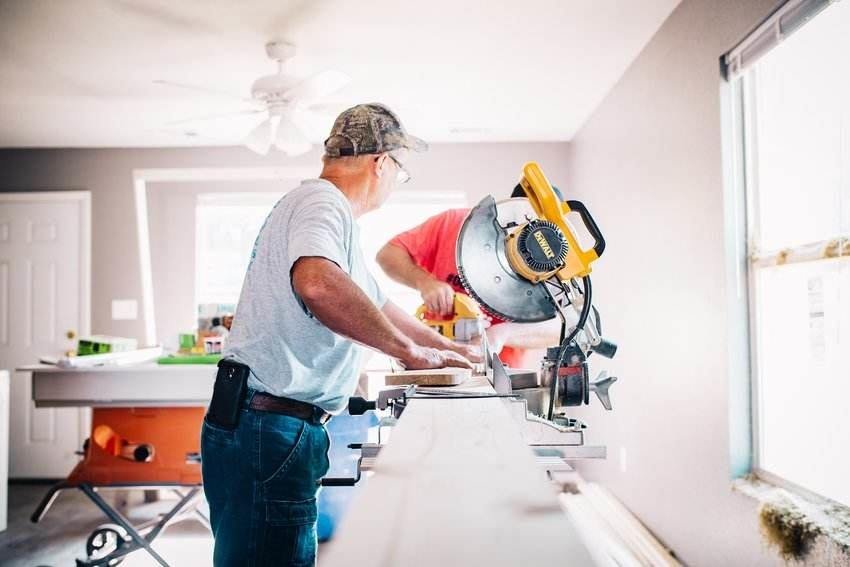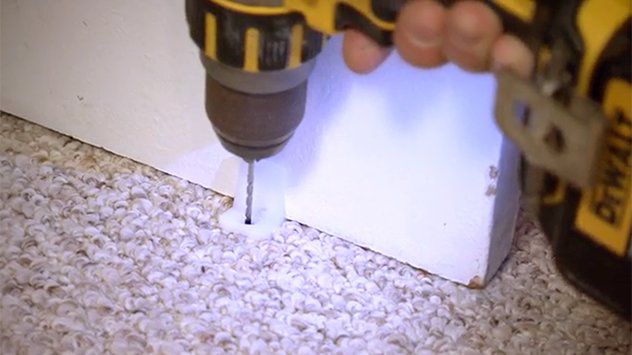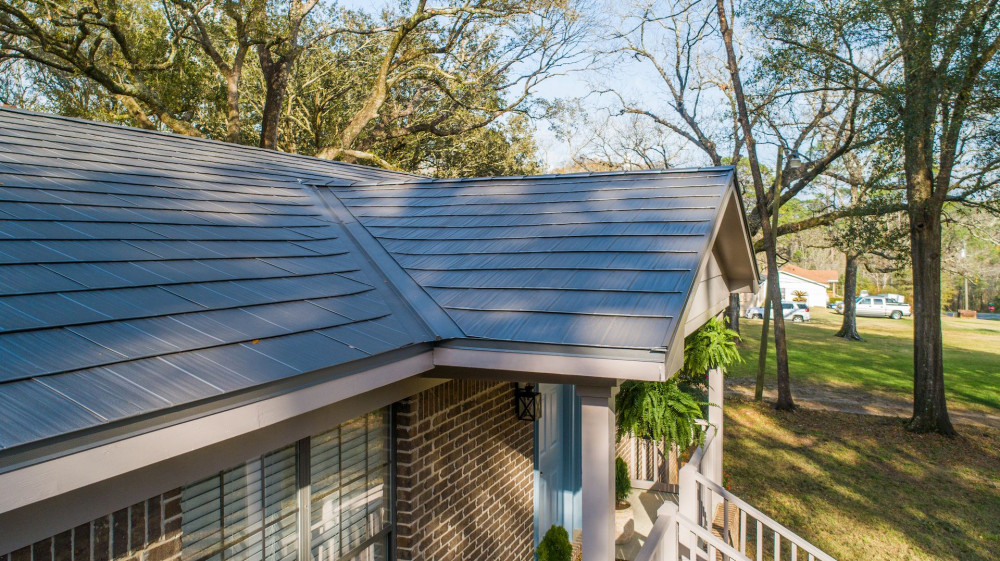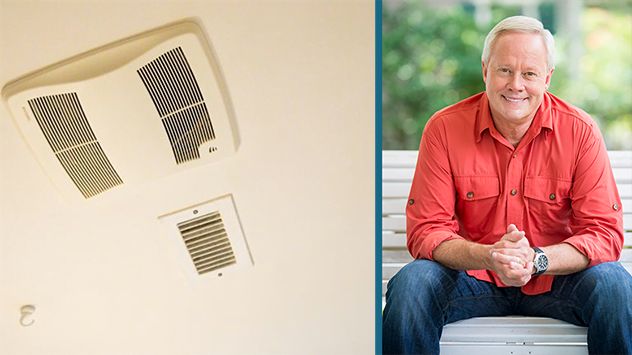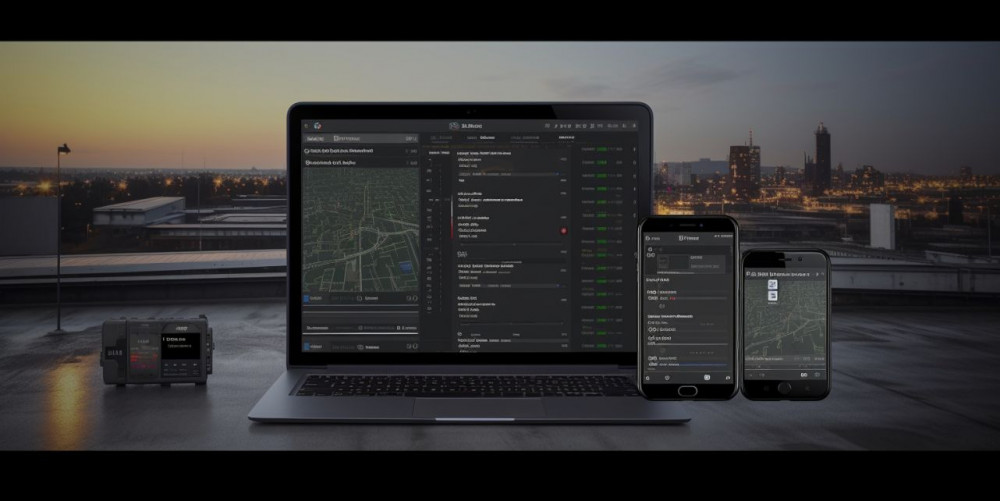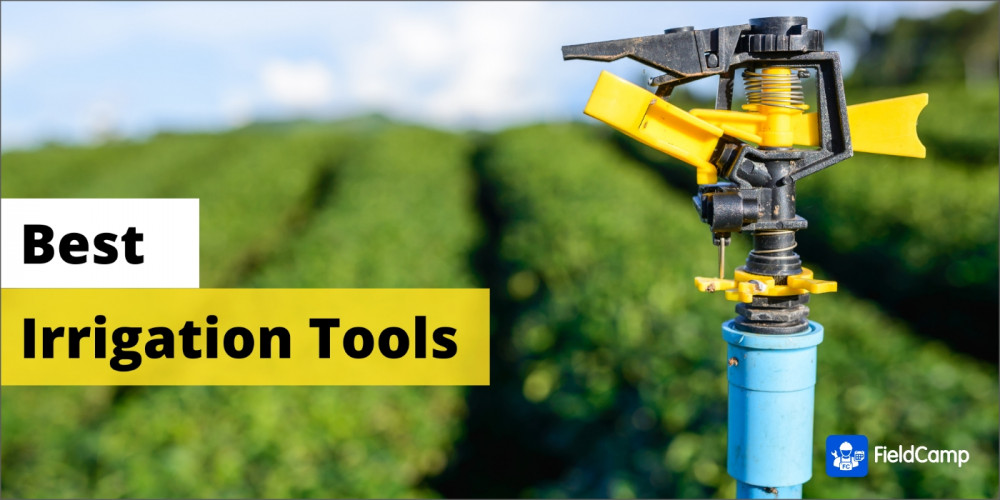Air conditioning (often referred to as AC, A/C, or air con) is the process of removing heat and moisture from the interior of an occupied space to improve the occupants' comfort. Air conditioning can be used in both domestic and commercial environments. This process is most commonly used to achieve a more comfortable interior environment, typically for humans and other animals; however, air conditioning is also used to cool and dehumidify rooms filled with heat-producing electronic devices, such as computer servers, power amplifiers, and to display and store some delicate products, such as artwork.
Air-conditioning dates back to prehistory. Ancient Egyptian buildings used a wide variety of passive air-conditioning techniques. These became widespread from the Iberian Peninsula through North Africa, the Middle East, and Northern India. Similar techniques were developed in hot climates elsewhere.
Buildings designed with passive air conditioning are generally less expensive to construct than buildings with conventional HVAC systems, and maintenance costs are also lower. While tens of air changes per hour, and cooling of tens of degrees, can be achieved with passive methods, site-specific microclimate must be taken into account, complicating building design. Passive systems are mostly silent (with exceptions such as salasabils).
In dry, hot climates, the evaporative cooling effect may be used by placing water at the air intake, such that the draft draws air over water and then into the house. For this reason, it is sometimes said that the fountain, in the architecture of hot, arid climates, is like the fireplace in the architecture of cold climates. Evaporative cooling also makes the air more humid, which can be beneficial in a dry desert climate.
Hand fans have existed since prehistory. Large human-powered fans built into buildings include the punkah.
A phase transition below the desired temperature can be used to cool to that temperature. The oldest one is melting ice, but other substances with lower phase transition temperatures were experimented with. These early refrigerants were also essentially a form of heat storage; they were used up in the process of cooling and would have to be re-cooled when the outdoor temperature permitted it.
Compressing a refrigerant heats it, and letting it expand cools it (adiabatic temperature changes). Regardless of its pressure, heat flow will make a refrigerant approach the temperature of its surroundings. Mechanical compressors could therefore be used to manufacture ice for sale, dumping the heat into above-freezing surroundings.
The creation of the modern electrical air conditioning unit and industry is credited to the American inventor Willis H. Carrier. After graduating from Cornell University, Carrier found a job at the Buffalo Forge Company. There, he began experimenting with air conditioning as a way to solve an application problem for the Sackett-Wilhelms Lithographing and Publishing Company in Brooklyn, New York. The first air conditioner, designed and built in Buffalo, New York by Carrier, began working on 17 July 1902.
The first air conditioners and refrigerators employed toxic or flammable gases, such as ammonia, methyl chloride, or propane, that could result in fatal accidents when they leaked. Thomas Midgley, Jr. created the first non-flammable, non-toxic chlorofluorocarbon gas, Freon (R-12), in 1928. The name is a trademark name owned by DuPont for any chlorofluorocarbon (CFC), hydrochlorofluorocarbon (HCFC), or hydrofluorocarbon (HFC) refrigerant. The refrigerant names include a number indicating the molecular composition (e.g., R-11, R-12, R-22, R-134A). The blend most used in direct-expansion home and building comfort cooling is an HCFC known as chlorodifluoromethane (R-22).
Cooling in traditional AC systems is accomplished using the vapor-compression cycle, which uses the forced circulation and phase change of a refrigerant between gas and liquid to transfer heat.
Some air conditioning systems have the option to reverse the refrigeration cycle and act as heat pumps, therefore producing heating instead of cooling in the indoor environment. They are also commonly referred to as "reverse cycle air conditioners". The heat pump is significantly more energy efficient than electric resistance heating, because it moves energy from air or groundwater to the heated space, as well as the heat from purchased electrical energy. When the heat pump is in heating mode, the indoor evaporator coil switches roles and becomes the condenser coil, producing heat. The outdoor condenser unit also switches roles to serve as the evaporator and discharges cold air (colder than the ambient outdoor air).
In very dry climates, evaporative coolers, sometimes referred to as swamp coolers or desert coolers, are popular for improving coolness during hot weather. An evaporation cooler is a device that draws outside air through a wet pad, such as a large sponge soaked with water. The sensible heat of the incoming air, as measured by a dry bulb thermometer, is reduced. The temperature of the incoming air is reduced, but it is also more humid, so the total heat (sensible heat plus latent heat) is unchanged. Some of the sensible heat of the entering air is converted to latent heat by the evaporation of water in the wet cooler pads. If the entering air is dry enough, the results can be quite substantial.
Air conditioning can also be provided by a process called free cooling which uses pumps to circulate a coolant such as air, water, or a water-glycol mixture from a cold source, which in return acts as a heat sink for the energy that is removed from the cooled space. Common storage media are cool outside air, deep aquifers, or a natural underground rock mass accessed via a cluster of small-diameter boreholes. Some systems with small storage capacity are hybrid systems, using free cooling early in the cooling season, and later employing a heat pump to chill the circulation coming from the storage. The heat pump is added because the temperature of the storage gradually increases during the cooling season, thereby declining its effectiveness.
Since humans perspire to provide natural cooling by the evaporation of perspiration from the skin, reducing humidity makes occupants feel cooler at the same air temperature. An air conditioner designed for an occupied space typically will achieve a 30% to 60% relative humidity in the occupied space.
Air conditioning equipment will reduce the absolute humidity of the air processed by the system if the surface of the evaporator coil is significantly cooler than the dew point of the surrounding air. Moisture from the air will condense on the coil and must be disposed of or recycled.
Most modern air-conditioning systems feature a dehumidification cycle during which the compressor runs while the fan is slowed as much as possible to reduce the evaporator temperature and therefore condense more water. When the temperature falls below a threshold, both the fan and compressor are shut off to mitigate further temperature drops; this prevents moisture on the evaporator from being blown back into the room. When the temperature rises again, the compressor restarts and the fan returns to low speed.
A specialized air conditioner that is used only for dehumidifying is called a dehumidifier. It also uses a refrigeration cycle, but differs from a standard air conditioner in that both the evaporator and the condenser are placed in the same air path. A standard air conditioner transfers heat energy out of the room because its condenser coil releases heat outside. However, since all components of the dehumidifier are in the same room, no heat energy is removed. Instead, the electric power consumed by the dehumidifier remains in the room as heat, so the room is actually heated, just as by an electric heater that draws the same amount of power.
In a thermodynamically closed system, any power dissipated into the system that is being maintained at a set temperature (which is a standard mode of operation for modern air conditioners) requires that the rate of energy removal by the air conditioner increase. This increase has the effect that, for each unit of energy input into the system (say to power a light bulb in the closed system), the air conditioner removes that energy. To do so, the air conditioner must increase its power consumption by the inverse of its "efficiency" (coefficient of performance) times the amount of power dissipated into the system. As an example, assume that inside the closed system a 100 W heating element is activated, and the air conditioner has a coefficient of performance of 200%. The air conditioner's power consumption will increase by 50 W to compensate for this, thus making the 100 W heating element cost a total of 150 W of power.
For residential homes, some countries set minimum requirements for energy efficiency. In the United States, the efficiency of air conditioners is often (but not always) rated by the seasonal energy efficiency ratio (SEER). The higher the SEER rating, the more energy efficient is the air conditioner. The SEER rating is the BTU of cooling output during its normal annual usage divided by the total electric energy input in watt hours (W·h) during the same period.
- SEER = BTU ÷ (W·h)
Window unit air conditioners are installed in an open window. The interior air is cooled as a fan blows it over the evaporator. On the exterior, the heat drawn from the interior is dissipated into the environment as a second fan blows outside air over the condenser. A large house or building may have several such units, allowing each room to be cooled separately.
Split-system air conditioners come in two forms: mini-split and central systems. In both types, the inside-environment (evaporative) heat exchanger is separated by some distance from the outside-environment (condensing unit) heat exchanger.
These are used in homes and businesses. In them, the indoor unit can be an air handling unit or a fan coil unit, and a mechanism to heat the air and filter is placed inside a house or building and is connected to a condensing unit, which is outdoors. The air handler is controlled by a thermostat placed some distance away from the air handler. A user sets a desired temperature on the thermostat and the thermostat controls the air handler to maintain the set temperature. The air is fed through the air handler and, using ducts, into the spaces to be air conditioned. The air handler is usually placed away from the spaces that are air conditioned, in a different room. The air handler may get its air from outside or from the room, either through vents placed indoors or from ducts. The air handler may also be placed outside, contain a condenser, and allowed to draw outside air. When these criteria are met, they are instead known as rooftop systems, rooftop units, rooftop packaged unit or packaged rooftop system.
A mini-split system typically supplies air conditioned and heated air to a single or a few rooms of a building. In these, the evaporator unit uses a cross-flow fan to blow air from the evaporator coil. The name mini-split is often used to refer to those split systems that only supply air to a single room. Multi-zone systems are a common application of ductless systems and allow up to 8 rooms (zones) to be conditioned from a single outdoor unit. Multi-zone systems typically offer a variety of indoor unit styles including wall-mounted, ceiling-mounted, ceiling recessed, and horizontal ducted. Mini-split systems typically produce 9,000 to 36,000 BTU (9,500–38,000 kJ) per hour of cooling to a single room or indoor unit. The first mini-split systems were sold in 1954-1968 by Mitsubishi Electric and Toshiba, in Japan. Its invention was motivated by the small size of modern Japanese homes, and the large size of traditional ducted central split systems. Multi-zone (multi-split) systems provide extended cooling and heating capacity up to 60,000 BTU's to multiple rooms or indoor units simultaneously. Large multi-zone systems are known as VRF (Variable refrigerant flow) systems and are often used in commercial buildings. Multi-zone ductless systems were invented by Daikin in 1973 and VRF systems were also invented by Daikin in 1982. Both were first sold in Japan.
A multi-split system is a conventional split system, which is divided into two parts (evaporator and condenser) and allows cooling or heating of several rooms with one external unit. In the outdoor unit of this air conditioner, there is a more powerful compressor, ports for connecting several traces, and automation with locking valves for regulating the volume of refrigerant supplied to the indoor units located in the room.
Before selecting the installation location of the air conditioner, several main factors need to be considered. First of all, the direction of airflow from the indoor units should not fall on the place of rest or work area. Secondly, there should not be any obstacles in the way of the airflow that might prevent it from covering the space of the premises as much as possible. The outdoor unit must also be located in an open space, otherwise, the heat from the house will not be effectively discharged outside and the productivity of the entire system will drop sharply. It is highly advisable to install the air conditioner units in easily accessible places, for further maintenance during operation.
Central ducted A/C provides temperature control and ventilation to an area by conditioning air within an air handler and distributing it to one or more zones. The temperature of individual zones can be controlled by varying the airflow to each zone and/or reheating the air.
Central cooling plants are used to condition large commercial, industrial, or campus loads. At larger scales, the ductwork required to move conditioned air to and from the plant would be impractically large, so an intermediate fluid such as chilled water is used instead. The plant circulates cold water to terminal chilled water devices such as air handlers or fan/coil units. The plant often consists of a chiller, which may be water- or air-cooled. If water-cooled, the chiller is cooled by a cooling tower.
A portable air conditioner can be easily transported inside a home or office. They are currently available with capacities of about 5,000–60,000 BTU/h (1,500–18,000 W) and with or without electric-resistance heaters. Portable air conditioners are either evaporative or refrigerative.
A portable system has an indoor unit on wheels connected to an outdoor unit via flexible pipes, similar to a permanently fixed installed unit. The portable units draw indoor air and expel it outdoors through a single duct. Many portable air conditioners come with heat as well as dehumidification function.
Hose systems, which can be monoblock or air-to-air, are vented to the outside via air ducts. The monoblock type collects the water in a bucket or tray and stops when full. The air-to-air type re-evaporates the water and discharges it through the ducted hose and can run continuously.
Evaporative coolers, sometimes called "swamp coolers", do not have a compressor or condenser. Liquid water is evaporated on the cooling fins, releasing the vapor into the cooled area. Evaporating water absorbs a significant amount of heat, the latent heat of vaporisation, cooling the air. Humans and animals use the same mechanism to cool themselves by sweating.
Air-conditioning engineers broadly divide air conditioning applications into comfort and process applications.
Comfort applications aim to provide a building indoor environment that remains relatively constant despite changes in external weather conditions or in internal heat loads.
Air conditioning is common in the US, with 90% of new single-family homes constructed in 2019 including air conditioning, ranging from 99% in the South to 62% in the West. This has been the case since the 1960s. In 2015, 90% of U.S. households had air conditioning. The U.S consumes more energy for air conditioning than the rest of the world. In Canada, air conditioning use varies by province. In 2013, 55% of Canadian households reported having an air conditioner, with high use in Manitoba (80%), Ontario (78%), Saskatchewan (67%), and Quebec (54%) and lower use in Prince Edward Island (23%), British Columbia (21%), and Newfoundland and Labrador (9%). In Europe Malta, it is estimated that around 55% of households have an air conditioner installed.
Process applications aim to provide a suitable environment for a process being carried out, regardless of internal heat and humidity loads and external weather conditions. It is the needs of the process that determine conditions, not human preference. Process applications include these:
- Chemical and biological laboratories
- Cleanrooms for the production of integrated circuits, pharmaceuticals, and the like, in which very high levels of air cleanliness and control of temperature and humidity are required for the success of the process.
- Environmental control of data centers
- Facilities for breeding laboratory animals. Since many animals normally reproduce only in spring, holding them in rooms in which conditions mirror those of spring all year can cause them to reproduce year-round.
- Food cooking and processing areas
- Hospital operating theatres, in which air is filtered to high levels to reduce infection risk and the humidity controlled to limit patient dehydration. Although temperatures are often in the comfort range, some specialist procedures, such as open heart surgery, require low temperatures (about 18 °C, 64 °F) and others, such as neonatal, relatively high temperatures (about 28 °C, 82 °F).
- Industrial environments
- Mining
- Nuclear power facilities
- Physical testing facilities
- Plants and farm growing areas
- Textile manufacturing
- Microclimate control, as in humidors and collections care of cultural heritage
In hot weather, air conditioning can prevent heat stroke, dehydration from excessive sweating, and other problems related to hyperthermia. Heat waves are the most lethal type of weather phenomenon in developed countries. Air conditioning (including filtration, humidification, cooling and disinfection) can be used to provide a clean, safe, hypoallergenic atmosphere in hospital operating rooms and other environments where proper atmosphere is critical to patient safety and well-being. It is sometimes recommended for home use by people with allergies.
As of 2018, 1.5 billion air conditioning units were installed, with the International Energy Agency expecting 5.6 billion units in use by 2050. Globally, current air conditioning accounts for 1⁄5 of energy usage in buildings globally, and the expected growth of the usage of air conditioning, will drive significant energy demand growth. In response to, in 2018 the United Nations called for the technology to be made more sustainable to mitigate climate change.
Alternatives to continual air conditioning can be used with less energy, lower cost, and with less environmental impact. These include:
- In large commercial buildings, making windows able to be opened by occupants when the air outside is cool enough to be comfortable
- Setting thermostats to around 82 °F (28 °C) and allowing workers to wear more climate-appropriate clothing, such as polo shirts and Bermuda shorts. This approach has worked for the Cool Biz campaign in Japan.
- Passive cooling techniques, such as:
- Passive solar cooling
- Natural ventilation under and through buildings
- Operating windows to induce a stack effect breeze
- Letting in cool air at night and closing windows during the day.
- Operating shades to reduce solar gain
- Building slightly underground, to take advantage of unpowered conduction and geothermal mass
- Placement of trees, architectural shades, windows (and using window coatings) to reduce solar gain
- Thermal insulation placed to prevent heat from entering
- Light-colored building materials reflect away more incoming infrared radiation
In an automobile, the A/C system will use around 4 horsepower (3 kW) of the engine's power, thus increasing fuel consumption of the vehicle.
The selection of the working fluids (refrigerants) has a significant impact not only on the performance of the air conditioners but on the environment as well. Most common refrigerants used for air conditioning contribute to global warming, and many also deplete the ozone layer. CFCs, HCFCs, and HFCs are potent greenhouse gases when leaked to the atmosphere.
Air conditioning caused various shifts in demography, notably that of the U.S starting from the 1970s.
First designed to benefit targeted industries such as the press as well as large factories, the invention quickly spread to public agencies and administrations. As a matter of fact, studies published by Carrier's at the time showed an increase of productivity close to 24% in places equipped with air conditioning.
